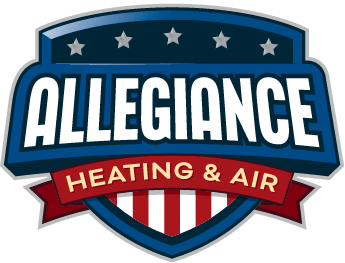Heat pumps are an often-misunderstood member of the HVAC family. They have been used for years in mild climates, but until recently they have not been used in areas that experienced extended periods of freezing temperatures. Today’s heat pump technology has advanced so that it now offers a legitimate alternative across the country, including right here in New Albany, IN And Surrounding Areas. We’re here to break down the question, how does a heat pump work? And provide you all the information you need to know if it’s a good alternative for your New Albany, IN home.
What is a Heat Pump?
A heat pump can be a powerful sidekick, or sometimes a complete replacement of your typical HVAC system. It is an all-in-one heating and air conditioning system that works to extract warm air or “pumps heat” from one place and transfers it to another.
So, how does a heat pump work? Similar to a refrigerator, heat pumps use electricity to move warm air from one cool space to a warm space. This makes the cool space cooler and the warm space warmer. Heat pumps do not generate heat, they just move heat from one place to another.
Parts of a Heat Pump
A typical heat pump is made up of two major components: an outdoor unit and an indoor air handler.
Outdoor Unit: This typically looks much like an outdoor air conditioning unit and contains a coil and a fan. The coil will operate as a condenser in cooling mode or an evaporator when in heating mode. The fan blows outside air over the coil to help the heat exchange.
Indoor Air Handler: This contains a coil and fan. The coil acts as an evaporator in cooling mode or a condenser when in heating mode. The fan moves air across the coil and throughout the ducts in your home.
- Refrigerant: This is the substance that absorbs and rejects heat as it circulates throughout the heat pump system.
- Compressor: The compressor pressurizes the refrigerant and moves it throughout the system.
- Reversing Valve: This reverses the flow of refrigerant when necessary to switch between heating and cooling.
- Expansion valve: This is like an internal meter that regulated the flow of refrigerant to make things cooler or warmer as necessary.
Heat Pump: How Does it Work
Heat energy naturally wants to move to areas with lower temperatures and less pressure. Heat pumps rely on this and simply put heat in contact with cooler, lower-pressure environments so that the heat can naturally transfer itself. This is what makes heat pumps so efficient in transferring heat from one place to another.
A heat pump has two modes; cooling and heating. In cooling mode, the pump is moving heat away from the home, while in heating mode, it’s bringing it in. Each mode works a little differently to keep your home at the desired temperature.
Cooling mode: So how does a heat pump work in cool mode? In cooling mode, the heat pump is taking the warm air in your home and replacing it with cooler air from outside acting like an air conditioner. Here’s how it works:
- Liquid refrigerant is pumped through the expansion device, functioning as an evaporator.
- Air from inside is blown across the coils and heat is absorbed by the refrigerant.
- Cool air is blown throughout the home.
- The liquid refrigerant heats up and evaporates into a gas.
- That gas passes through a compressor, which pressurizes it.
- The hot, pressurized gas moves to the outdoor unit
- The outdoor unit fan moves air across the coils, which is cooler than the hot gas.
- The heat is transferred from the refrigerant to the outside air.
- The refrigerant condenses back to liquid
- Liquid refrigerant is pumped back through the system
- The cycle repeats again.
Heating Mode: How does a heat pump work in heating mode? When it’s cold outside, a heat pump extracts what outside heat is available and transfers it inside. Even when it’s cold in New Albany, IN And Surrounding Areas, there is still heat in the air. Outside air at 9 degrees contains 82 percent of the heat available in the air at 100 degrees. The heat pump is able to pull all of this heat from the cold air and send it inside to warm your home.
The physics of the process are the same. Heat energy is absorbed in the outdoor unit by the liquid refrigerant, turning it into gas. Pressure turns the cold gas into a hot gas. The hot gas is cooled by passing air, condensing it to warm liquid. The warm liquid is turned into cool liquid and the cycle continues.
FAQ’s About Heat Pumps
What Temperature is Best for a Heat Pump
According to our, heat pumps work best in mild climates that don’t hit freezing temperatures. It is significantly more efficient as a cooling mechanism than a heater. While it can save you significant energy costs in the warmer months, most pumps will automatically engage your regular heater when it gets to 35 degrees outside.
Why is it Called a Heat Pump if it Cools and Heats Your Home
Because it pumps heat. In the summer, it is pumping heat out; in the winter it pumps heat in. Either way, it is pumping the heat throughout the year.
Should I Switch to Emergency Heat When it Gets Below 35 Degrees Outside
The heat pump and the electric backup heater work together automatically, there is no need for you to switch or change anything. However, if you have oil or gas backup you may want the option to switch that on for more heat if necessary.
Do Heat Pumps Bring in Fresh Air
No, they do not. They are moving the warm air around, but they are simply recirculating the air that is already existing in the home.
Let’s Get Comfy
An electric heat pump allows you to heat and cool your home throughout the year while saving on heating and cooling costs. A heat pump generates more energy than it consumes, making it the most efficient heating and cooling system available today. For those who live in mild or warm climates, this can be the best way to stay comfortable all year long without paying high energy bills.
If you would like more information about how a heat pump work in New Albany, IN And Surrounding Areas, or would like to schedule service for your current one, then call Allegiance Heating & Air, LLC HVAC today.
Brian Schneider
At Allegiance Heating & Air, LLC, we strive to provide the highest quality and most reliable service for our residential and commercial customers. We want to deliver the best value to our customers and maintain long-lasting relationships by always exceeding their expectations. We pledge to maintain the highest level of honesty and integrity with our customers, vendors, and, clients. Based in Greenville, IN And Surrounding Areas, we’re proud to serve Floyds Knobs, New Albany, Clarksville, Jeffersonville, Sellersburg, Georgetown, and Corydon as well as Louisville, KY areas.



